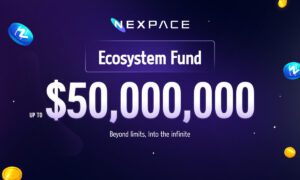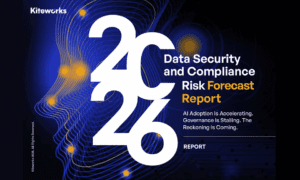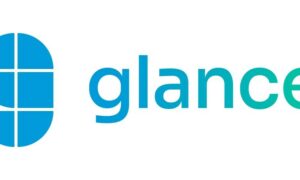Mobile payment in Bangladesh is undergoing its second coming with smartphone penetration and the nationwide drive to digitization powering its rise. As the nation embraces digital financial services, new entrants are joining the traditional banks and financial institutions to redefine the digital payments landscape and drive new opportunities for financial inclusion. This blog provides an overview of the digital financial services landscape in Bangladesh, looking at some of the major trends, challenges and opportunities.
Overview of Digital Financial Services in Bangladesh
The world of digital financial services in Bangladesh is changing fast, ushering in a new era of transacting, for individuals and enterprises. “Its mobile money service was instrumental in promoting financial inclusion in a country in which large sections of the population were previously unbanked. The proliferation of mobile money platforms in Bangladesh has facilitated affordable digital transactions, making it easier for individuals to send and receive money, pay bills, and access other financial products and services using digital wallets. For a country which has a very large rural population, m-banking is crucial, especially because traditional banking infrastructure is also scarce in these areas. These channels provide different type of digital payment that meets the need of the public.
Bangladesh’s digital payments landscape is developing, with QR code and interoperable digital platforms introducing new embellishments for what was already among the best user experiences. This environment encompasses a variety of payment ecosystem operators, ranging from traditional banking and financial services providers to new fintech firms. These banks and financial service providers are focused on scaling digital financial services among a broader population. The expansion of digital payments is also being supported by a growing number of online payment providers in the country restoring confidence and the focus on digital financial services by the Bangladesh government. Bangladesh’s payments ecosystem is moving in this direction, toward an inclusive payments ecosystem where all walks of life can take advantage of the ease and efficiency of digital payments. The digital payment ecosystem has evolved significantly over the past few years, providing support to the electronic payment systems with a potentiality for future growth. The next steps in the ecosystem in Bangladesh are digital financial services. ‘As we look and plan for 2025, the trends we’re seeing today are likely to converge and the lines between different trends begin to blur.’ Into 2025 digital payments will continue to grow dramatically, with estimates in billions of digital transactions. But key actions to protect digital assets and protect personal data are essential in order to retain trust and security in the increasingly broad digital financial services space.
Understanding the Mobile Payments Landscape
Bangladesh – a microcosm of digital transformation in South Asia The digital ecosystem in Bangladesh is challenging to comprehend and is a rapidly evolving space. This vibrant payments landscape in Bangladesh is driven by a combination of factors, including growth in smartphone adoption, government efforts to support digital financial inclusion, and the work of new and ingenuous fintech firms. Navigating this terrain involves evaluating the dynamic between legacy banks and financial institutions on the one hand, and emerging digital financial service providers competing for market presence on the other. Mobile financial services (MFS) in Bangladesh Mobile financial services have played a crucial role in bringing about the financial inclusion, especially for unbanked population, accessing financial services using digital channels. This is evident in the rising uptake of mobile money and other digital payment channels for day to day consumption. Key factors to digital payments in Bangladesh The future expansion of digital payments in Bangladesh depends on several factors such as the regulatory environment, technological progress, and consumer confidence. Towards 2025, the next chapter of digital financial services in Kenya will be characterized by more innovation and growth, however with much more to come on interoperable digital platforms which will not only provide better end user experiences but also better security. Crucial measures at protecting your digital assets and personal data and the essentiality of personal data protection act are also vital to create a sustainable and trusted digital payment system.
In the bangladeshi digital payments landscape, wide variety of Payment Ecosystem players are dynamically influencing the market. Traditional banks and other financial institutions are ramping up digital financial services in response to evolving consumer habits and to stay competitive. Banks in question are using technology to provide online payments, m-banking and other digital financial products to their customers. At the same time an acceleration of fintech startups are shaking up the old-school financial institutions by developing new solutions around QR code payments, digital wallets and peer-to-peer transaction tools. Such fintechs are typically nimble and able to react swiftly to consumer demand, which can make them fast gainers of market share and adoption of digital payments. Among emerging fintech solutions making waves in the region is odeonpay, offering flexible digital payment services designed for both businesses and individuals.. Support from the government for the development of digital financial services in Bangladesh is also notable, including the support of programs like the “Digital Bangladesh” campaign, which promotes the adoption of digital technologies throughout the economy. To foster the development of a more accessible and inclusive payments system that provides all members of society with an opportunity to access digital payments inexpensively and conveniently, which will help accelerate the economy and include individuals in the financial system. Digital payments sector has made significant progress in the last few years and enabled eco-system between electronic payments systems and further built on to as well.
Challenges and Opportunities for Emerging Players
Fintech, New Entrants and vendors in the payment space in Bangladesh are met with a distinctive set of challenges and opportunities in today’s context. As digital payment in Bangladesh continues to gain traction, and when the use of digital financial services is growing, the new players will struggle to find a firm footing in this complex environment, to plant their roots and become firmly ensconced in it. There is a big hurdle ahead and this is fierce competition from longstanding banks and financial institutions with their existing customer base, brand and infrastructure. These banks and financial institutions are expanding digital financial services to maintain their market share and seek new customers, creating a space for innovative new players to distinguish themselves with compelling value propositions. Moreover, the new players in the digital payments segment would also have to overcome regulatory issues, right from financial regulation to data privacy laws. The PDPA is necessary and would also add to the compliance requirements. Obtaining licenses and permits can take a long time and be relatively expensive, especially for the small fintech start-ups that are small by size. It is not surprising, then, that protecting digital assets and getting a handle on the nuanced regulatory environment is essential for the survival of this new breed. Addressing these problems would be key to protecting one´s digital life and resources.
The Future of Digital Financial Services in Bangladesh
The prospects for DFS in Bangladesh There is a significant promise for the future growth and innovation of DFS in Bangladesh. The digital transformation journey in the country is just halfway, still, there are some trends and factors that are likely to define the digital payments landscape in Bangladesh in the years to come. For comparison, it’s helpful to explore which payment gateway is best in India, where fintech innovation also plays a key role in financial inclusion and payment modernization. One key trend here is the rapid pace at which consumers and companies are embracing digital payments and mobile financial services. The adoption is influenced by increasing smartphone penetration, increased internet accessibility, and greater consciousness about ease and convenience of digital transactions. As more people gain access to digital financial services, the need for a broader selection of online payments and digital financial products and services is expected to grow, presenting opportunities for both incumbent companies and new players in fintech. The growth of mobile financial services in Bangladesh is likely to continue, especially in rural areas with less access to conventional baking facilities. One would also expect more ubiquitous interoperable digital platform where the customers would be able to move money and make payments across various digital wallets or payment systems. The digital payment framework has been developed rapidly with in the last couple of decades, which has facilitated the electronic payment regime and it is leading to a continuation.



































